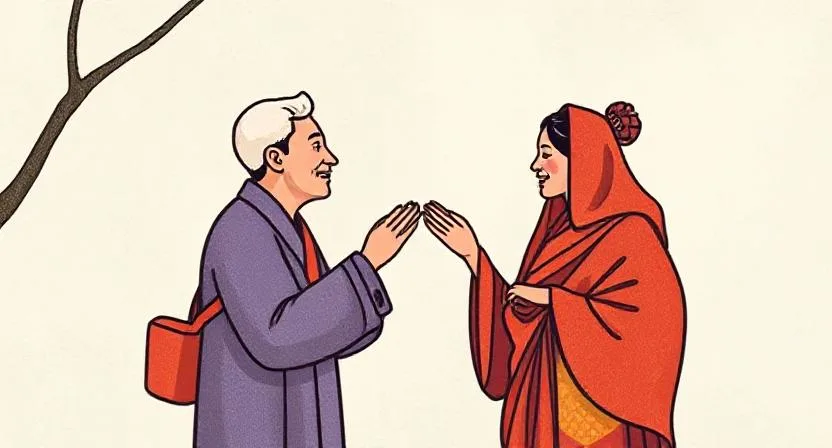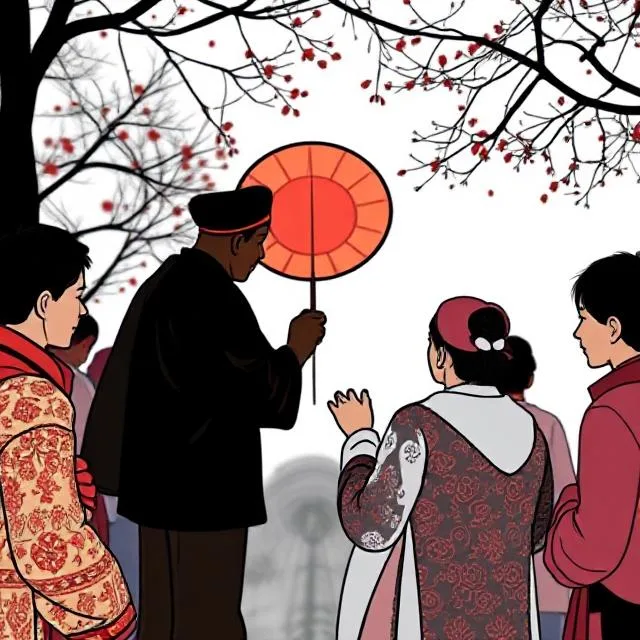Introduction: Understanding Gratitude Across Cultures
Gratitude, as a universally acknowledged emotion, plays a pivotal role in fostering positive human relationships and promoting well-being. At its core, gratitude is the recognition and appreciation of kindness or benefits received, whether from individuals, groups, or even nature. Despite its universal significance, the expression and experience of gratitude can vary greatly across cultures. In a rapidly globalizing world, understanding these cultural differences has become increasingly important, as it can foster better communication, respect, and empathy among diverse communities. This article delves into how gratitude is experienced and expressed across various cultures, offering insights into its psychological, social, and spiritual underpinnings.
The Universal Nature of Gratitude: A Human Emotion
Gratitude is a common human emotion found across cultures, playing a vital role in social bonding and interpersonal relationships. Psychologically, it’s often seen as a moral emotion, encouraging prosocial behavior and reinforcing the social fabric of societies. Evolutionary theories suggest that gratitude evolved to promote cooperation and mutual support among individuals, enhancing survival and group cohesion.
Research, such as studies by Robert Emmons and Michael McCullough, has demonstrated that the experience of gratitude is universal. It’s not only expressed in human interactions but is also reflected in social and cultural practices worldwide, highlighting its essential role in human psychology. From a biological standpoint, gratitude is linked to the release of dopamine and oxytocin, neurotransmitters associated with happiness and social bonding, reinforcing its positive impact on our mental health and relationships.
Cultural Differences in Expressing Gratitude
While gratitude is universally experienced, how it’s expressed can differ significantly. Some cultures emphasize verbal expressions of thanks, while others prioritize actions or specific rituals. For instance, in Western cultures like the U.S. and much of Europe, saying “thank you” is a direct and common form of expressing gratitude. However, in Eastern cultures like Japan, gratitude is often conveyed not just through words like “arigato,” but through gestures such as bowing, which conveys a deep sense of respect and humility.
In collectivist societies, gratitude often goes beyond individual recognition and is expressed in the context of family, community, or group dynamics. In contrast, individualistic cultures may emphasize personal acknowledgment of a favor or gift. Indian culture, for example, expresses gratitude with the word “dhanyavaad,” often accompanied by gestures of respect like folding hands in a namaste, while in the Middle East, hospitality and the act of offering food or gifts are considered vital forms of showing gratitude.

Language and Gratitude: How Words Shape the Experience
Language plays a crucial role in how gratitude is perceived and communicated. In some cultures, multiple words or phrases exist to express gratitude, each with nuances tied to context. For example, in Spanish-speaking cultures, “gracias” is commonly used to thank someone, but “agradecimiento” is a deeper, more formal term that reflects a profound sense of thankfulness. In contrast, some cultures may not explicitly verbalize gratitude; rather, they imply it through actions or through nonverbal cues such as gifts or hospitality.
The words used for gratitude can influence how individuals experience and internalize the emotion. For instance, in languages with more specific expressions of gratitude, the speaker may feel a stronger or more direct connection to the emotion being expressed, impacting the depth of their appreciation.
Gratitude in Collectivist vs. Individualist Cultures
Cultural orientation plays a significant role in shaping how gratitude is expressed. In collectivist societies, such as many Asian, African, and Latin American cultures, gratitude is often tied to group dynamics, emphasizing relationships, familial ties, and communal well-being. In these cultures, gratitude might be expressed through indirect actions, such as repaying a favor by contributing to the community or honoring elders with gestures of respect.
On the other hand, in individualist cultures, such as those in the U.S. and much of Western Europe, gratitude tends to be more personal and direct, focusing on the individual’s acknowledgment of another person’s action. Here, expressions like “thank you” or giving gifts are seen as direct ways of showing appreciation, and there’s a greater emphasis on personal responsibility in expressing gratitude.
Religious and Spiritual Influences on Gratitude
Major world religions significantly shape how gratitude is perceived and expressed. In Christianity, gratitude is often framed in terms of thanksgiving to God for blessings received. Rituals such as the Thanksgiving holiday in the U.S. embody this spiritual connection to gratitude. Similarly, in Islam, Eid al-Fitr celebrates gratitude for God’s blessings after a month of fasting, while in Buddhism, gratitude is cultivated as a form of mindfulness and spiritual practice.
Hinduism also emphasizes gratitude, with festivals like Pongal celebrating the harvest and offering thanks to nature. These religious practices highlight that gratitude isn’t just a social tool, but a deeply spiritual act that connects individuals to something greater than themselves.
Gratitude in Indigenous Cultures: A Deeper Connection
In many indigenous cultures, gratitude is closely tied to the land, ancestors, and community. Native American traditions, for example, often emphasize gratitude for nature, with rituals that honor the earth, animals, and the elements as essential sources of life. The concept of reciprocity and interconnectedness is central to many indigenous worldviews, where acts of gratitude go beyond individual transactions and extend to the environment and ancestral spirits.
Similarly, Aboriginal cultures in Australia and African traditions place a strong emphasis on giving thanks to the earth, ancestors, and community. These practices reflect a deep sense of interdependence, where gratitude is seen as a way of maintaining harmony and balance with the natural and spiritual world.
The Role of Social Norms in Shaping Gratitude
Social norms play a critical role in how gratitude is expressed. In cultures where formalized etiquette governs social interactions, such as Japan, showing gratitude is not only a personal choice but an expected practice. In these contexts, a simple “thank you” might not suffice, and a deeper, more formal expression of thanks is required, often accompanied by a bow or gift.
In contrast, in more spontaneous cultures, gratitude may be less rigidly defined and expressed in more casual or immediate ways. Societal hierarchies also influence gratitude, particularly in cultures where respect for elders or authority figures is emphasized. For example, in many Asian cultures, the act of showing gratitude to elders is highly ritualized and requires special care in how it is expressed.
Gratitude in Modern, Globalized Societies
As globalization continues to shape cultural interactions, the way gratitude is expressed is evolving. Western-style expressions of thanks, such as “thank you,” have become more widespread globally, sometimes even replacing indigenous practices of showing gratitude. Social media and messaging apps have also transformed how gratitude is communicated, often in more casual or abbreviated forms, such as “thanks!” or the use of emojis.
The blending of cultural practices has led to a hybridization of gratitude rituals, with people from different cultures adopting new ways of expressing thanks while still retaining elements of their traditional practices. This growing cross-cultural exchange can lead to more inclusive and diverse understandings of gratitude.
The Psychological and Social Benefits of Gratitude Across Cultures
Gratitude, regardless of cultural context, offers significant psychological and social benefits. Studies have shown that practicing gratitude improves mental health, increases happiness, and strengthens relationships. In cultures where gratitude is deeply embedded in social practices, such as in India and many African nations, its role in fostering community well-being is particularly evident.
Gratitude practices, such as keeping a gratitude journal or participating in gratitude rituals, are increasingly being adopted worldwide. These practices are linked to improved mental health outcomes and enhanced social connections, making gratitude a universally beneficial practice.
Challenges in Cross-Cultural Gratitude
Understanding and expressing gratitude across cultures can sometimes lead to misunderstandings. What might be seen as an appropriate expression of thanks in one culture could be perceived as insufficient or overly formal in another. For example, in some cultures, a verbal “thank you” might be considered unnecessary if a gift or gesture has been made, while in others, it is an essential component of social interaction.
To navigate these challenges, it’s important to approach gratitude with cultural sensitivity. Educating oneself about local customs, observing social cues, and being aware of cultural contexts can help prevent unintentional offense and foster better cross-cultural communication.
Conclusion: Embracing Cultural Diversity in Gratitude
Cultural variations in the experience of gratitude reveal the richness of human expression and social bonds across the globe. Understanding and respecting these differences not only enhances interpersonal interactions but also promotes a deeper appreciation of cultural diversity. As we continue to navigate an interconnected world, reflecting on our own cultural practices and learning from others can foster more inclusive, empathetic, and harmonious relationships.
FAQs About Cultural Variations in Gratitude
What is the most common way to express gratitude worldwide?
The most common way to express gratitude is through verbal acknowledgment, such as saying "thank you," but how it’s expressed varies widely across cultures.
How do collectivist cultures differ from individualist cultures in expressing gratitude?
Collectivist cultures emphasize gratitude in the context of community and relationships, while individualist cultures tend to focus on personal expressions of thanks.
Are there cultures where gratitude is not openly expressed?
Some cultures may imply gratitude through actions or rituals rather than explicitly stating it, such as in certain African and Indigenous cultures.
How can I show gratitude in a culturally sensitive way?
To show gratitude culturally sensitively, it’s important to learn about local customs, observe how gratitude is expressed, and be mindful of societal hierarchies and etiquette.
